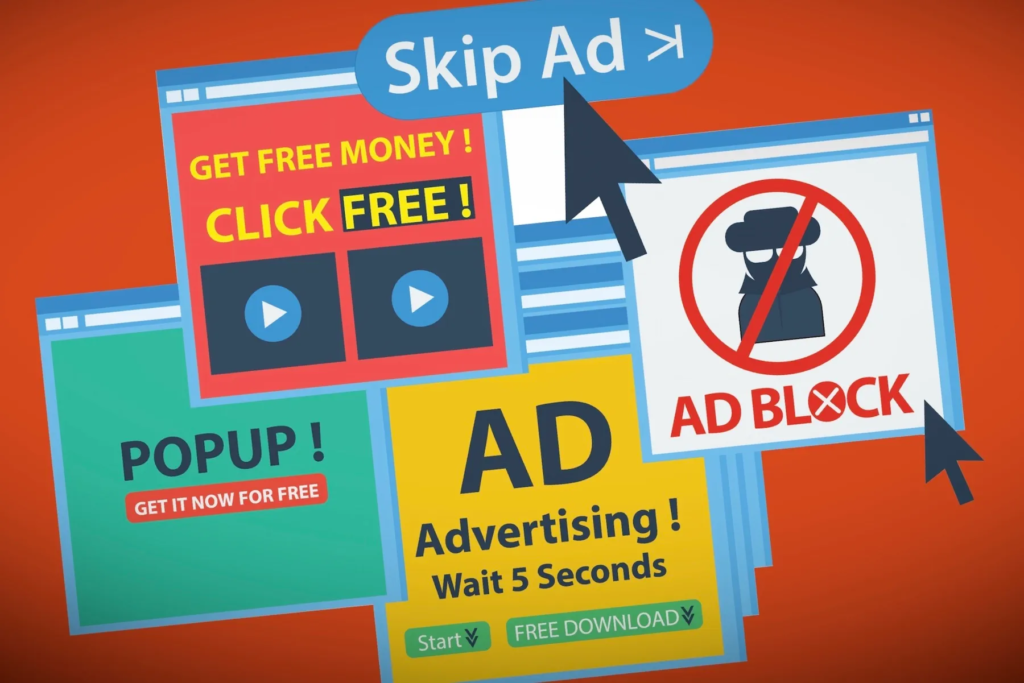
Introduction to Ad Blocking
Imagine scrolling through your favorite website, only to be bombarded by a flurry of ads that disrupt your reading experience. It’s frustrating, isn’t it? This has led many users to turn to ad blockers in droves. Ad blocking is reshaping the landscape of digital advertising and challenging traditional revenue models.
As more people seek refuge from relentless advertisements, the implications for publishers are profound. They face tough choices as their income streams dwindle and user engagement fluctuates. Understanding this dynamic is crucial for anyone navigating today’s digital world—both consumers who want a seamless online experience and publishers striving for sustainable content monetization.
With the rise of ad blockers comes a pivotal moment in how we think about content delivery and revenue generation on the internet. Let’s dive into what ad blocking really means for all parties involved!
The Rise of Ad Blocking and Its Impact on the Advertising Industry
Ad blocking has surged in popularity over the last decade. Users increasingly seek freedom from intrusive ads that disrupt their online experiences. This shift is reshaping digital advertising landscapes.
The growth of ad blockers reflects a demand for better user privacy and experience. Millions now use these tools, leading to significant revenue loss for publishers and advertisers alike. Brands must adapt or risk becoming obsolete.
Advertisers are grappling with declining engagement rates as users turn to ad-free environments. As traditional models falter, innovation becomes essential. Creative storytelling and authentic connections may be the key to winning back audiences.
Publishers face urgent questions about content monetization strategies. They must balance user expectations with financial viability while exploring alternative revenue streams like subscriptions or partnerships.
This transformative period presents both challenges and opportunities for all stakeholders in the advertising ecosystem.

Types of Ad Blocking Methods
Ad blocking comes in various forms, each catering to different user preferences and needs.
Browser extensions are among the most popular methods. These tools integrate seamlessly with browsers, detecting and eliminating unwanted ads on websites. Users appreciate their ease of use and instant results.
Another method is network-level ad blocking. This approach involves configuring routers or using dedicated hardware to filter ads before they even reach a device. It’s a more comprehensive solution that can protect multiple devices simultaneously.
Mobile users often turn to built-in features within apps or specific mobile browsers designed for ad avoidance. These options prioritize user privacy while enhancing browsing speed by reducing clutter.
Some savvy users employ DNS-based ad blockers that route traffic through custom DNS servers, effectively preventing ads from loading at all. Each method reflects a growing desire for cleaner online experiences without intrusive advertising interruptions.
Advantages and Disadvantages of Ad Blocking for Users and Publishers
Ad blocking offers users a streamlined browsing experience. With fewer distractions, they can focus on content that truly matters to them. Enhanced page loading speeds and improved privacy also attract many internet users. Who wouldn’t want to enjoy their favorite websites without intrusive ads?
However, this convenience comes at a cost for publishers. Revenue loss is a significant concern as ad-supported models begin to falter. Many rely heavily on advertising income to fund quality content creation.
Moreover, ad blockers can create an imbalance in the digital ecosystem. Publishers may resort to aggressive anti-ad blocking strategies or even restrict access for those using these tools, leading to potential user frustration.
Users might face limitations when accessing premium content behind paywalls due to revenue shortfalls from lost advertisements. This tension between user preferences and publisher sustainability creates ongoing challenges in digital advertising landscapes today.

Possible Solutions for Publishers and Advertisers
Publishers and advertisers face pressing challenges due to ad blocking. However, several strategies can help them navigate this evolving landscape.
One effective approach is adopting a transparent communication strategy with users. By explaining how ads support content creation, publishers can foster understanding and potentially reduce ad avoidance behavior.
Offering value through enhanced user experiences is another solution. Innovative formats, such as native advertising or sponsored content, provide relevance without intrusiveness. This helps maintain user engagement while generating revenue.
Implementing anti-ad blocking technologies also presents an option. Publishers may request users to disable their ad blockers in exchange for access to premium content or exclusive features, creating a win-win situation.
Exploring alternative revenue streams like subscription models or donations allows publishers to diversify income sources beyond traditional advertising channels. Engaging the audience with compelling content will pave the way for sustainable digital publishing practices.
The Future of Ad-Supported Models in the Age of Ad Blocking
The landscape of digital advertising is shifting. Ad blocking technologies are reshaping how users interact with content. As consumer awareness grows, so does the demand for user privacy.
Publishers and advertisers face a daunting challenge: maintaining revenue while respecting user preferences. Traditional ad-supported models may need rethinking to survive in this environment.
Innovative strategies will emerge. Subscription models without ads could gain traction among audiences fatigued by intrusive advertising.
Brands might explore native advertising or sponsored content that blends seamlessly into the user experience. This approach can enhance engagement without alienating readers.
Moreover, platforms must prioritize transparency about data usage and value exchange. Building trust with users is essential for future success in monetization efforts.
As ad blockers continue to evolve, adaptability will be key for publishers seeking sustainable pathways forward in an ever-changing market landscape.
Conclusion
The impact of ad blocking on the advertising landscape is profound. As more users turn to ad blockers, publishers face significant revenue loss and challenges in monetizing their content effectively. This growing trend highlights the need for a balanced approach that respects user privacy while still allowing advertisers to reach their audiences.
Innovation will be crucial as both publishers and advertisers explore new strategies. Ad-supported models must adapt to changing consumer preferences, addressing issues like ad fatigue and intrusive ads that lead to ad avoidance. Emphasizing quality over quantity can enhance user engagement and loyalty.
As digital advertising continues evolving, it’s essential for stakeholders to consider alternative revenue streams beyond traditional ads. Subscriptions without advertisements may become more appealing, but they also risk alienating those who prefer free access.
The future will likely see a blend of innovative anti-ad blocking strategies alongside an increased focus on providing value-driven content experiences that respect user choices. Maintaining platform sustainability requires collaboration between all parties involved—content creators, advertisers, and consumers alike—to create environments where everyone benefits from meaningful interactions without compromising privacy or experience.
For more such content, keep visiting QAWire


